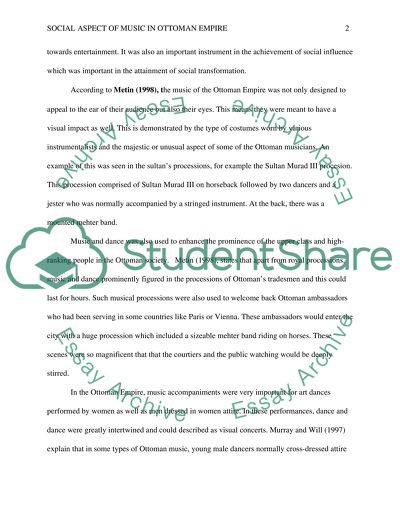Cite this document
(“Social Aspect of Music in Ottoman Empire Essay Example | Topics and Well Written Essays - 1500 words”, n.d.)
Retrieved from https://studentshare.org/music/1430931-social-aspect-of-music-in-ottoman-empire
Retrieved from https://studentshare.org/music/1430931-social-aspect-of-music-in-ottoman-empire
(Social Aspect of Music in Ottoman Empire Essay Example | Topics and Well Written Essays - 1500 Words)
https://studentshare.org/music/1430931-social-aspect-of-music-in-ottoman-empire.
https://studentshare.org/music/1430931-social-aspect-of-music-in-ottoman-empire.
“Social Aspect of Music in Ottoman Empire Essay Example | Topics and Well Written Essays - 1500 Words”, n.d. https://studentshare.org/music/1430931-social-aspect-of-music-in-ottoman-empire.


